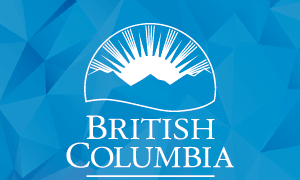Aerial gypsy moth treatment planned for North Surrey in 2019
The Voice of Canada News
The Government of British Columbia is one step closer to eradicating a growing population of gypsy moths in Surrey and minimizing the risk they pose to local forests, farms, orchards and trees.
 The Ministry of Forests, Lands, Natural Resource Operations and Rural Development has applied for a pesticide-use permit to aerial spray 62 hectares of residential and municipal park land close to Highway 1, near the Port Mann Bridge in North Surrey.
The Ministry of Forests, Lands, Natural Resource Operations and Rural Development has applied for a pesticide-use permit to aerial spray 62 hectares of residential and municipal park land close to Highway 1, near the Port Mann Bridge in North Surrey.
Trapping and monitoring results over the past several years show clear evidence a gypsy moth population is becoming established in the proposed treatment area. This is the same area of North Surrey that was ground (hand) sprayed in 2017 and 2018. It is now apparent that the ground sprays were not effective.
If left untreated, the moths could spread to new areas of the province via vehicles, containers, rail and marine vessels.
The ministry is planning up to four applications of Foray 48B between April 15 and June 30, 2019, to control the moths. Foray 48B is used in organic farming and contains bacillus thuringiensis var kurstaki (Btk). Btk has been approved for the control of gypsy moth larvae in Canada since 1961.
Btk is naturally present in urban, forest and agricultural soil throughout the province. It does not harm humans, mammals, birds, fish, plants, reptiles, amphibians, bees or other insects. It only affects caterpillars after they have ingested it.
Residents are invited to submit comments on the application (refer to Permit No. 738-002919/19) for evaluation to the Integrated Pest Management Act administrator, Ministry of Environment and Climate Change Strategy, Suite 200-10470 152 St., Surrey, B.C., V3R 0Y3, by Jan. 11, 2019.
The gypsy moth is an introduced pest species. The caterpillars feed on tree leaves and can damage forests, farms and orchards. Large gypsy moth populations defoliated sections of forests and residential areas in Ontario and the eastern United States in recent years.
The moths are unintentionally brought to B.C. on vehicles and equipment from eastern North America. Infested locations are often subject to agriculture and transportation quarantines, and additional treatments including vehicle checks, product certification and increased pesticide use.


